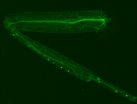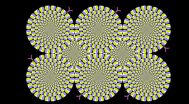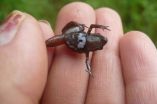(Press-News.org) AUSTIN, Texas -- Men's and women's ideas of the perfect mate differ significantly due to evolutionary pressures, according to a cross-cultural study on multiple mate preferences by psychologists at The University of Texas at Austin.
The study of 4,764 men and 5,389 women in 33 countries and 37 cultures showed that sex differences in mate preferences are much larger than previously appreciated and stable across cultures.
"Many want to believe that women and men are identical in their underlying psychology, but the genders differ strikingly in their evolved mate preferences in some domains," said co-author of the study and psychology professor David Buss. "The same holds true in highly sexually egalitarian cultures such as Sweden and Norway as in less egalitarian cultures such as Iran."
Mating is multidimensional and requires matching a pattern of mate preferences to a pattern of potential mate features. The researchers suggest that these patterns of mate preferences are far more linked to gender than any individual mate preference examined separately would suggest.
Researchers found that they could predict a person's sex with 92.2 percent accuracy if they knew his or her mate preferences.
"The large overall difference between men's and women's mate preferences tells us that the sexes must have experienced dramatically different challenges in the mating domain throughout human evolution," said lead author and graduate researcher Daniel Conroy-Beam.
According to the study, men favor mates who are younger and physically attractive. Women seek older mates with good financial prospects, higher status and ambition.
"Because women bear the cost of pregnancy and lactation, they often faced the adaptive problem of acquiring resources to produce and support offspring, while men faced adaptive problems of identifying fertile partners and sought cues to fertility and future reproductive value," Conroy-Beam said.
Of the 19 mate preferences that researchers considered, five varied significantly based on gender: good financial prospects, physical attractiveness, chastity, ambition and age. Four other preferences -- pleasing disposition, sociability and shared religious and political views -- were not sex-differentiated.
"Few decisions impact reproduction more than mate choice," Conroy-Beam said. "Mate preferences will therefore be a central target and driver of biological evolution. We have found some promising initial results, and we think this holistic approach will help answer a lot of questions in mating research in the future."
The study "How sexually dimorphic are human mate preferences?" was published in the August 2015 issue of the Personality and Social Psychology Bulletin.
INFORMATION:
Understanding how and why we evolved such large brains is one of the most puzzling issues in the study of human evolution. It is widely accepted that brain size increase is partly linked to changes in diet over the last 3 million years, and increases in meat consumption and the development of cooking have received particular attention from the scientific community. In a new study published in The Quarterly Review of Biology, http://www.jstor.org/stable/10.1086/682587, Dr. Karen Hardy and her team bring together archaeological, anthropological, genetic, physiological and ...
Researchers at the Babraham Institute and University of Massachusetts Medical School in the United States have developed a new model to study motor neuron degeneration and have used this to identify three genes involved in the neurodegeneration process. These findings could have relevance for understanding the progression of amyotrophic lateral sclerosis (ALS) and other forms of motor neuron disease (MND). ALS is the most common form of adult-onset motor neuron disease and kills over 1,200 people a year in the UK.
The researchers developed a new model to study neurodegeneration ...
Greenhouse gasses (GHG) emission savings due to final renewable energy consumption in electricity, cooling/heating and transport sectors rose at a compound annual growth rate of 8.8% from 2009 to 2012, confirming the renewables' great potential in climate change mitigation, according to a new JRC report. Nearly two thirds of the total savings came thanks to renewable energy development in Germany, Sweden, France, Italy and Spain.
The report assesses data on the use of renewable energy, submitted by EU Member States every two years, as required by EU legislation on renewable ...
TORONTO -- Despite the growing use of online support groups such as those on Facebook to help curb substance abuse, attending traditional face-to-face meetings may continue to be more effective for people trying to maintain sobriety, according to research presented at the American Psychological Association's 123rd Annual Convention.
"One of the most hotly debated media issues today is whether our rapidly increasing use of social networking might be supplanting face-to-face-interactions and, if so, what the social consequences might prove for us as a culture," said Donald ...
JAMA Oncology will publish two studies, a commentary and an author audio interview examining outcomes in women with breast cancer who had breast-conserving surgery and were treated with hypofractionated radiation therapy (shorter courses of radiation treatment administered in larger daily fraction sizes) compared with longer courses of conventionally fractionated radiation therapy.
In the first article, Benjamin D. Smith, M.D., of the University of Texas MD Anderson Cancer Center, Houston1, and coauthors conducted a randomized clinical trial of 287 women to assess the ...
In an analysis that included a representative sample of the South Korean population, a lower blood manganese level and higher blood mercury level were associated with greater odds of a glaucoma diagnosis, according to a study published online by JAMA Ophthalmology.
Glaucoma is the leading cause of irreversible blindness worldwide and a growing public health concern because of an aging global population. Abnormal body levels of essential elements and exposure to toxic trace metals have been postulated to contribute to the pathogenesis of diseases affecting many organ ...
WASHINGTON, Aug. 6, 2015 -- Optical illusions are deceptive and mind-boggling. What's going on inside our heads when we see things that appear to be moving but aren't, and when we view other, similar visual tricks? In this collaboration between the American Chemical Society and Inside Science TV, we explain how optical illusions work, so you can understand the science behind the trickery. Check it out here: https://www.youtube.com/watch?v=VYIr40D7wNw.
Inside Science TV is a production of the American Institute of Physics. See more videos in the series on the ISTV YouTube ...
Enhancement of the Petawatt laser "LFEX" [1] up to 2,000 trillion watts for one trillionth of one second.
High power output implemented by a 4-beam amplifier technology and the world's highest performance dielectric multilayer diffraction grating of large diameter [2].
Big step forward for creating such new fundamental technologies as cancer therapy for medical applications and non-destructive inspection of bridges and buildings, to contribute to our future life of longevity, safety, and security, and for the realization of fast ignition as an energy resource.
The ...
The results of their research have recently been published in the high-profile journal eLife*.
The ability of most cardiac muscle cells to reproduce disappears in humans and all other mammals shortly after birth. What remains unclear, however, is how this happens and whether it is possible to restore this ability and therefore to regenerate the heart.
FAU researchers Dr. David Zebrowski and Prof. Dr. Felix B. Engel from the Department of Nephropathology at Universitätsklinikum Erlangen's Institute of Pathology and their colleagues have now found a possible explanation ...
Carrying itself around with a dark brown mask on its face and a broad shapeless white mark on its chest and belly, a frog had been jumping across the Peruvian cloud forests of the Andes unrecognised by the scientific world. Now, this visibly distinguishable species has been picked up by Dr. Catenazzi of Southern Illinois University and his team from its likely only locality, a cloud forest near Cusco in Peru, at 2350 m elevation by Drs. Catenazzi, Uscapi and May. Their research is published in the open-access journal ZooKeys.
The new fleshbelly frog species, called N. ...



